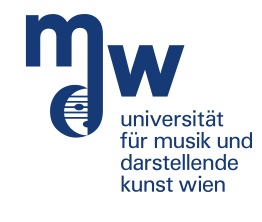Code
C++
-
The Half-Physler as presented at NIME 2019 [1] and the resontube opcode as presented at the ICSC 2019 [2]
- In this repository you find the C++ code to compile the tube models [3] as opcodes for Csound. The opcodes are implemented following the guidelines of the Csound Plugin Opcode Framework [4].
- https://github.com/ketchupok/half-physler
Csound
- The COSMO DSP library contains +20 Csound-based audio effects (DSP-Library/Effects).
- https://github.com/cosmoproject/cosmo-dsp
- Find a detailed manual and introduction here.
- Code by Alex Hofmann, Bernt Isak Wærstad, Kristoffer Koch, Kim Ervik, Iain McCurdy, and others. (2013–2019)
Supercollider
- CCIn - CC-Responder MIDI-In wrapper for SuperCollider
- https://github.com/supercollider-quarks/CCIn
- This class makes it quick to send MIDI control values to UGen arguments. It initialises a CCResponder and maps the received data onto control busses. Those can be read out by the class itself.
- Code by Alex Hofmann & Florian Golz, with support from Fredrik Olofsson & Alberto DeCampo (Dez. 2010)
Install within SC-Lang:
Quarks.install(“CCIn”)
Then choose: “Language-> Recompile Class Library”
Usage:
// simple example
m = CCIn.new; // listen to all midi in ports and all midichannels
x = {SinOsc.ar(m.kr(0, 0, \freq), 0, 0.2)}.play // MIDI Chan = 0, CC = 0, Range 20-20000 Hz
m.free; // loosing control
x.free; // free synthMusic
- SuperCollider code for “Tight-interlocked Oscillators”
Python
- Developed within the ASEA-Uninet project on distributed ethnomusicology data, this is the code base for a proof-of-concept implementation for an API-service for Music Information Retrieval, running in parallel with a Data Repository (Dataverse). Authors and details in [5], including an example analysis, based on the model by [6].
[1] Hofmann, A., Chatziioannou, V., Schmutzhard, S., Erdoğan, G., & Mayer, A. (2019). The Half-Physler: An oscillating real-time interface to a tube resonator model. In Proceedings of the International Conference on New Interfaces for Musical Expression (NIME) 2019 (pp. 130–133). Porto Allegre, BR: Federal University of Rio Grande do Sul.
[2] Hofmann, A., Schmutzhard, S., Pàmies-Vilà, M., Erdoğan, G., & Chatziioannou, V. (2019). An opcode implementation of a finite difference viscothermal time-domain model of a tube resonator for wind instrument simulations. In The Fifth International Csound Conference ICSC2019. Cagli, IT.
[3] S. Schmutzhard, V. Chatziioannou, and A. Hofmann. Parameter optimisation of a viscothermal time-domain model for wind instruments. In Proceedings of the 2017 International Symposium on Musical Acoustics, pages 27–30, Montreal, CA, 2017.
[4] V. Lazzarini. The csound plugin opcode framework. In Proceedings of the 14th Sound and Music Computing Conference, pages 267–274, 2017.
[5] Hofmann, A., Miksa, T., Knees, P., Bakos, A., Saglam, H., Ahmedaja, A., Yimwadsana, B., Chan, C., Rauber, A. (2021). Enabling FAIR use of Ethnomusicology Data - through Distributed Repositories, Linked Data and Music Information Retrieval. Empirical Musicology Review – Special Issue on Open Science in Musicology, 16(1), 47–64. https://doi.org/10.18061/emr.v16i1.7632
[6] M. Marolt, C. Bohak, A. Kavčič, and M. Pesek, “Automatic segmentation of ethnomusicological field recordings,” Applied sciences, vol. 9, iss. 3, pp. 1-12, 2019.

